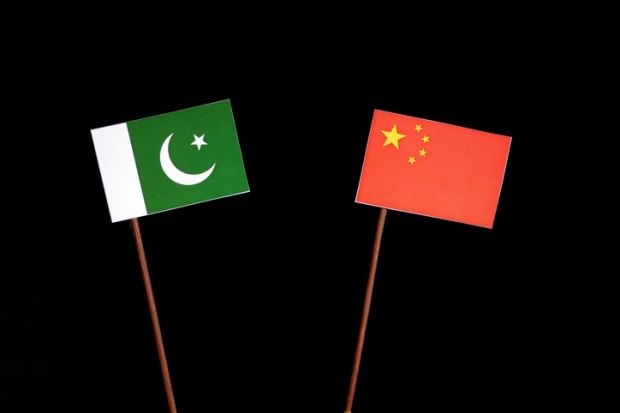The China-Pakistan Economic Corridor (CPEC) unveiled by Chinese president Xi Jinping in 2013, is frequently referred to in Pakistan as a potential economic game changer. Now in its first phase of implementation, it will see the Chinese government pump more than $50 billion (£40 billion) into improving transport links and energy cooperation between China and Pakistan.
Hardly any attention has been paid, however, to how this opportunity might be leveraged to build the technological capacity of Pakistan’s universities. And, so far, academics have been conspicuous by their absence from those clamouring for a share of the pie.
There is no question that universities have a lot to offer in terms of economic development. Introduced in the late 1990s, the Triple Helix concept of university-industry-government relationships has transformed the social role of higher education in many developing countries, casting them as central to the transition to a knowledge-based society, whose policies all three players combine to shape. Although it is not easy to implement in countries that lack research universities or global businesses, studies suggest that the approach generally leads to greater scientific productivity, for instance.
Pakistani universities need to capitalise on China’s own desire to shift itself from a symbol of mass production to a knowledge-based economy. They need to align their strategies with Chinese companies’ existing strengths in information technology, railways, manufacturing and energy. And they need to approach both Chinese firms and the Pakistani government to identify the technical skills areas in which the demand for workers can be expected to rise, and implement new diplomas and short courses accordingly.
Networking is also an important tool that can help bring the spheres of government, industry and the academy together. Pakistan’s Higher Education Commission, which regulates all of its universities, should take the lead and help to start this conversation within universities and research centres, incentivising their interaction with existing firms, as well as establishing incubation facilities for new ones on university campuses, including granting them shared access to university facilities.
CPEC also offers an opportunity to address Pakistan’s rampant inequality. In the country’s poorest province, Balochistan, the federal government could help local politicians and tertiary education providers to set up inclusive business incubation centres charged with developing customised, socially useful entrepreneurial approaches. Drawing on the Chinese experience of poverty reduction, such measures could start to build skilled human resources able to contribute to local and national economic development.
For example, developing local expertise in processing copper – which is mined in Balochistan – could help Pakistan to save the cost of importing the metal after the ore is exported to China for refinement.
The Balochistani port of Gwadar, a gateway to the Middle-Eastern and African markets, is one of the nodes of CPEC and will be connected by new road and rail links to the far western Chinese city of Kashgar, in Xinjiang Province. This offers many business opportunities for Pakistani and international businesses, and local universities could both catalyse and benefit from this if they set up business research excellence centres aimed at helping to improve the quality of the goods and services to be exported.
Another crucial element in making a success of CPEC is the provision of Chinese language courses. Universities could develop these in partnership with the Chinese embassy and the Confucius Institutes already established in various Pakistani cities. One such initiative is the China Study Centre at the COMSATS Institute of Information Technology in Islamabad, established in 2013. This organises and promotes China-related activities in areas such as education, science, technology, business and culture. Acquiring some Chinese language ability could be particularly useful to locals living along the economic corridor, who could find work in the hospitality industries catering for Chinese workers.
A final crucial role – and immense research opportunity – for Pakistani universities will be to map the social, economic, environmental and political effects of CPEC. If it does not bring any benefits for local people, all of this vast investment will ultimately have been wasted.
Abdur Rehman Cheema is a development practitioner based in Islamabad. Muhammad Haris is programme officer at the China Study Centre at the COMSATS Institute of Information Technology, Islamabad.
Register to continue
Why register?
- Registration is free and only takes a moment
- Once registered, you can read 3 articles a month
- Sign up for our newsletter
Subscribe
Or subscribe for unlimited access to:
- Unlimited access to news, views, insights & reviews
- Digital editions
- Digital access to THE’s university and college rankings analysis
Already registered or a current subscriber?






